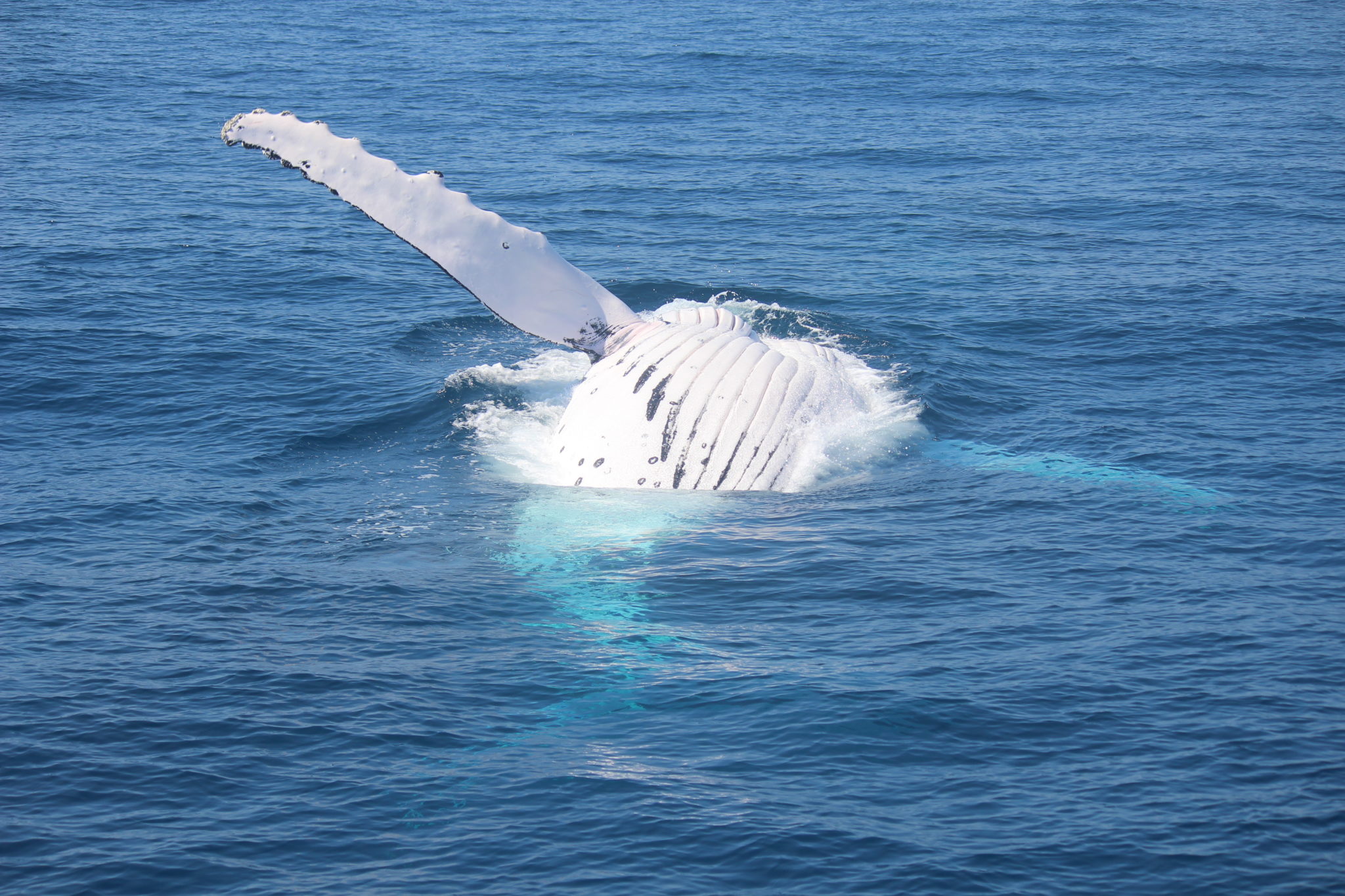THE HUMPBACK WHALE MIGRATION EFFECT
This winter, you might just be lucky enough to see more than “just” humpback whales visiting the Sunshine Coast during this winter’s migration.
The Sunshine Coast is once again anticipating the arrival of record numbers of Humpback Whales for their annual migration. Between May and November, over 20,000 Humpback Whales Migrate past our shores. These Whales are looking to make Queensland’s warm waters their temporary mating and birthing ground.
Whilst the Humpback whales are by far the most frequently sighted species during the migration time, you may just be lucky enough to spot one of these other fascinating whales.
ORCAS
Orcas, commonly known as killer whales, are lured to the Sunshine Coast’s waters during the winter months thanks to the abundance of food on offer…with a favourite being the humpback and minke whales! Orcas prey on these whales, and with thousands visiting our shores, it’s highly likely there’ll be some Orca pods lurking in the background!
Here are some facts about these fascinating creatures to help you spot one on your whale watching tour.
Characteristics
- Orcas are black and white, with a white eye patch
- They can weigh up to 6 tonnes, and range from 23 to 30 feet in length
- Their average lifespan is 50 to 80 years
- They have a diverse diet, feeding on fish, marine animals and even other whales
- Lucky for them however, there is no other animal that preys on them!
- They are a toothed whale
- Orcas can be found in each of the world’s oceans and in a variety of marine environments
Behaviour
- They’re extremely intelligent and highly social animals
- They hunt in pods – family groups of up to 40 individuals
- Their sophisticated hunting techniques and vocal behaviours are often specific to particular groups and passed across generations
- Contrary to popular belief, wild killer whales are actually not considered a threat to humans – they’ve only ever been aggressive towards humans whilst kept in captivity!
- Unlike most other species of whales, Orca whales do not appear to follow a regular migration route each year, instead driven by the availability of food
- Orcas are not actually whales, but in fact the largest of the dolphins!
DWARF MINKE WHALES
Dwarf Minke whales migrate along Australia’s East Coast annually as well. Gathering at the Great Barrier Reef for a few months over winter. Smaller than the humpback, they are distinguished by their unique colouring’s, particularly its white pectoral flippers with black edging.
These whales will be passing through the Sunshine Coast between June and August, so you may get lucky and spot one on your whale watching tour!
Characteristics
- Dwarf Minke Whales are smaller than the humpback, but can still grow up to 8 metres in length
- They are distinguished by their unique colouring’s, particularly its white pectoral flippers with black edging
- The dwarf minke whales show up every winter on Great Barrier Reef, where they spend a few short months.
- Queensland is the only area in the world where humans can interact with this species
- Dwarf Minkes are reliably spotted during the winter months on the outer edge of the northern Great Barrier Reef, where they spend a few months
- They have one calf each year which is almost 2 metres long at birth. That’s longer than the height of a baby giraffe!
- They can live to 60 years old
- The white and grey markings on the side of a minke whale are unique to each whale, much like fingerprints are to humans
- They are one of the fastest types of whales, and can travel at speeds of more than 30km
Keep your eyes peeled for these white and grey whales when you’re out on your whale watching tour!
SOUTHERN RIGHT WHALE
The rarest of the four, the Southern Right Whale is currently considered endangered. However, their population is on the rise, and so too are sightings! They follow a similar migration pattern of the humpback and dwarf minke, visiting the Sunshine Coast’s warm waters over the winter months for mating and giving birth.
These playful and inquisitive animals have been known to swim right up to boats to check out what’s going on. They also like to put on a show with mum and baby performing acrobatics for amazed whale watchers!
Characteristics
- Adult Southern Right Whales range from 14-18 metres in length
- These large animals weigh up to 80 tonnes – that’s the equivalent of 8 adult elephants
- Their mating season is from June – August, which is when there’ll be the greatest chance of spotting on one the Sunshine Coast
- Compared to other whale species, their heads is disproportionately large, making up roughly one third of the whale’s body.
- Unlike other species, the southern right whale does not have a dorsal fin.
- They have a dark greyish/black skin tone, with white patches on its throat and belly.
- The exact lifespan of these animals is unknown, but it’s estimated to be between 50-100 years
Behaviour
- Like the humpback and dwarf minke, the Southern Right Whales also primarily feed on krill, plankton and other tiny crustaceans.
- Their migration patterns are similar to that of the humpback, spending their feeding season in the colder Antarctic waters, and migrating north up Queensland’s coast for mating and birthing.
- These whales are skimmers and can be seen swimming at or near the surface of the water.
- Southern Right whales are fairly active and can be seen performing acrobatics in the water
- They’re a very social, and have been known to approach boats and vessels to observe them and the people.
- But they’re also gentle giants, appearing to be thoughtful when interacting with humans and small animals by limiting their activity, to ensure they do not cause injury to others.
- Unlike other species, male whales to not typically fight with one another or show jealousy when it comes to mating.
With as few as 12,000 Southern Right Whales spread through our oceans, they are the rarest of the whales you’ll likely spot in the Sunshine Coast’s waters. But, with their population on the rise and sightings becoming increasingly common, your chances of seeing these playful giants are better than ever before! Keep your eyes peeled.




